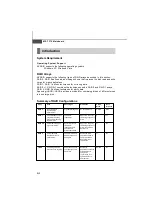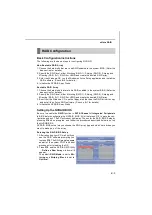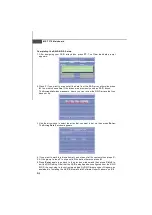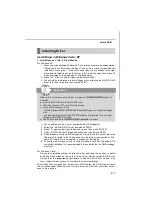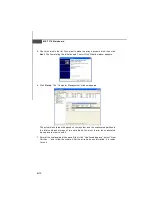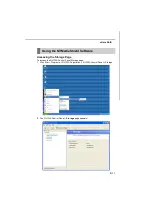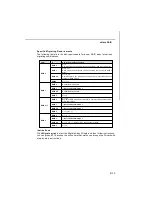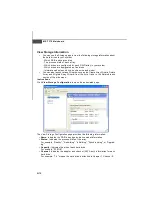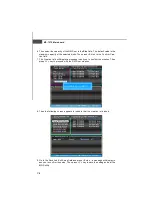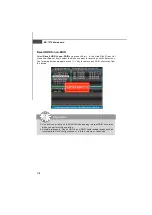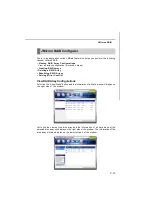
M S-7375 M ainboard
B-14
Remove a Spare
The Remove spare option appears only if you have a a RAID array with a spare disk
allocated to it.
Click
Remov e spar e
to s tart the Remove Spare W izard and then follow the
instructions.
You can press
F1
to access the online help that walks you through the W izard with
step-by-step instructions.
Migrate an Array
In a traditional RAID environment, when a user wants to change the current state of
a disk or a current array to a new RAID configuration, the process of reconfiguring
the new array involves multiple steps. The user must back up the data, delete the
array, re-boot the PC, and then reconfigure the new array.
MediaShield RAID allows the end user to change the current state of the disk or array
to another with a one-step process called "Migrating". This section describes the
NVIDIA Migrating process and explains how to use Migrating to convert from one
RAID array type to another.
General M igrating Requirements
•
The new array capacity must be equal to or greater than the previous array.
For example, it is possible to migrate from a RAID 1 array to a RAID 0 array as
long as the RAID 0 array is the same size as (or larger than) the RAID 1 array.
•
The number of disks in the new array cannot be less than the number of disks in
the original array.
•
You cannot migrate
- To or from a JBOD (Spanning) array
- From RAID 1 to RAID 1
- From RAID 0+1 to RAID 1
- From RAID 5 to 1
Migrating to an Array Larger Than 2 TB
Your disks must be partitioned using the GUID partition table (GPT) if you
plan to migrate to an array with greater than 2 TB storage.
If your original array is not a GPT disk and you expand your array
’
s capacity using the
migration feature to over 2 TB, you will not be able to access the additional storage
above 2 TB in the new array. To use the additional storage in this situation, back up
your data, repartition the array using GPT, then restore your data to the new volume.
Important
Be sure to make the volume dynamic if you plan to have more than four
partitions.



